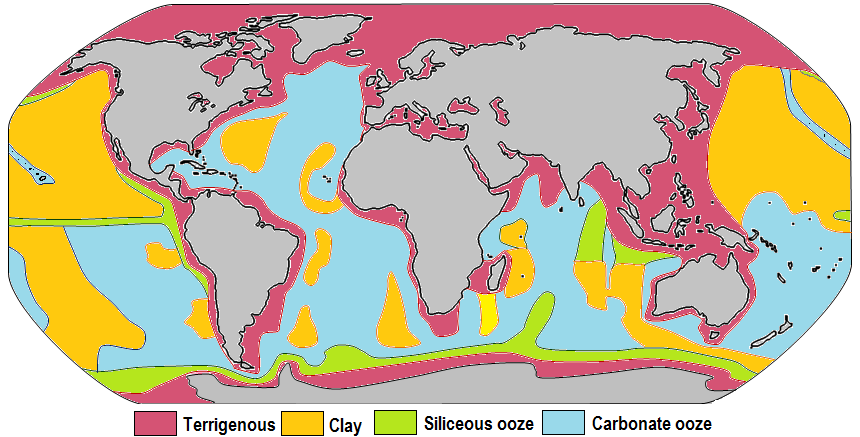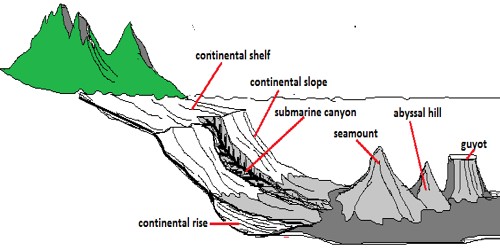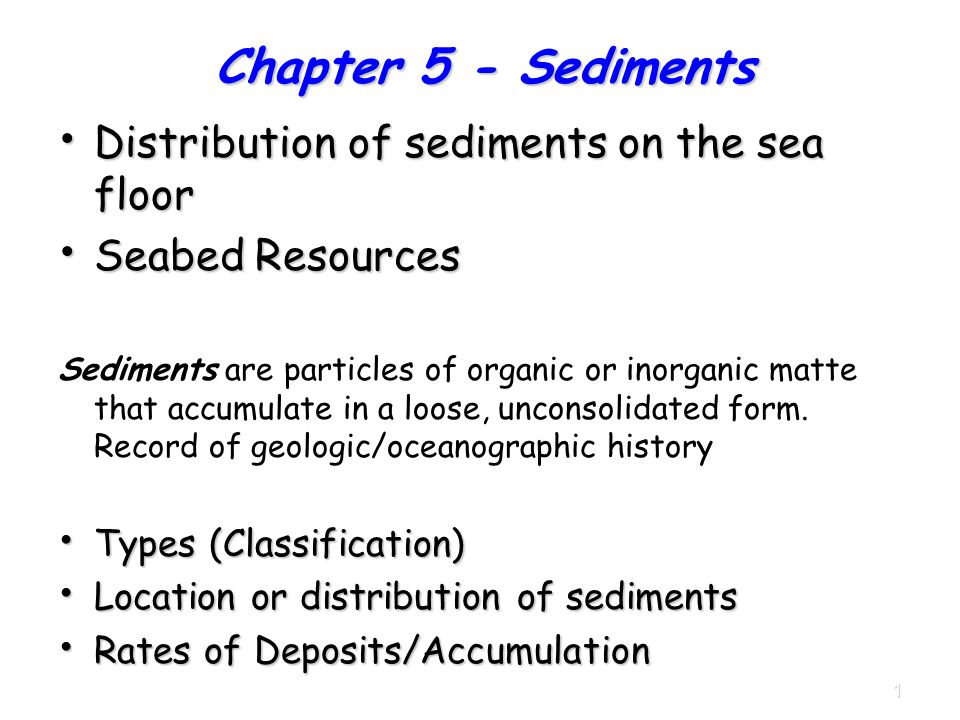In part 4 students develop a map showing the distribution of the primary marine sediment types of the pacific and.
Distribution of sediment types on the ocean floor.
The area has low biological productivity and the ccd is at 4500 m depth.
It is further contoured by strong currents along the continental rise.
Pelagic sediment is composed of clay particles and microskeletons of marine organisms that settle slowly to the ocean floor.
Sedimentary organic carbon preservation there are several controls that affect the org c distribution in in sediments.
Lesson objectives earth science students will.
Distribution of sediment throughout the ocean.
Prior knowledge on sea floor sediments is explored in part 1.
Another classification of ocean floor sediments is by the size of the individual grain.
Some of these organic.
Cosmogenous sediments could potentially end up in any part of the ocean but they accumulate in such small abundances that they are overwhelmed by other sediment types and thus are not dominant in any location.
The only exception are the crests of the spreading centres where new ocean floor has not existed long enough to accumulate a sediment cover.
The size is from the smallest to largest these are.
They are useful for determining the distribution of ancient dinosaurs.
Ocean basin ocean basin deep sea sediments.
Sediment thickness in the oceans averages about 450 metres 1 500 feet.
Clay less than or equal to 4 micrometer silt 4 to 62 micrometer sand 62 micrometer to 2 millimeter and more than 2 millimeter such.
Biogenous sediment cosmogenous sediment hydrogenous sediment.
Figure pageindex 1 shows the distribution of the major types of sediment on the ocean floor.
Analyze and describe the distribution of sediment types throughout the ocean lesson contents 1.
Identify the origins of different types of sediment 2.
The amount of organic matter preserved in the sediment depends on how much is produced and the preservation efficiency.
Terrigenous sediment is derived from land and usually deposited on the continental shelf continental rise and abyssal plain.
In parts 2 3 students observe and describe the physical characteristics of sediments cores and determine the composition using smear slide data and a decision tree.
Oceanographers have painstakingly mapped the distribution of sediment around the globe and have learned that at any given location the sediments provide important information regarding the history of the ocean as well as the overall state of climate on the.
Sediment accumulation will depend on the the amount of material coming from the source the distance from the source the amount of time that sediment has had to.
12 6 sediment distribution now that we have an understanding of the types of sediments found in the ocean we can turn our attention to the processes that cause different types of sediments to dominate in different locations.
Sandstone is an example of which of the following sediment types.
You take a sediment sample from the ocean floor at a depth of 5500 m.
Is not a random arrangement of these different sediment types.
The ocean basin floor is everywhere covered by sediments of different types and origins.









